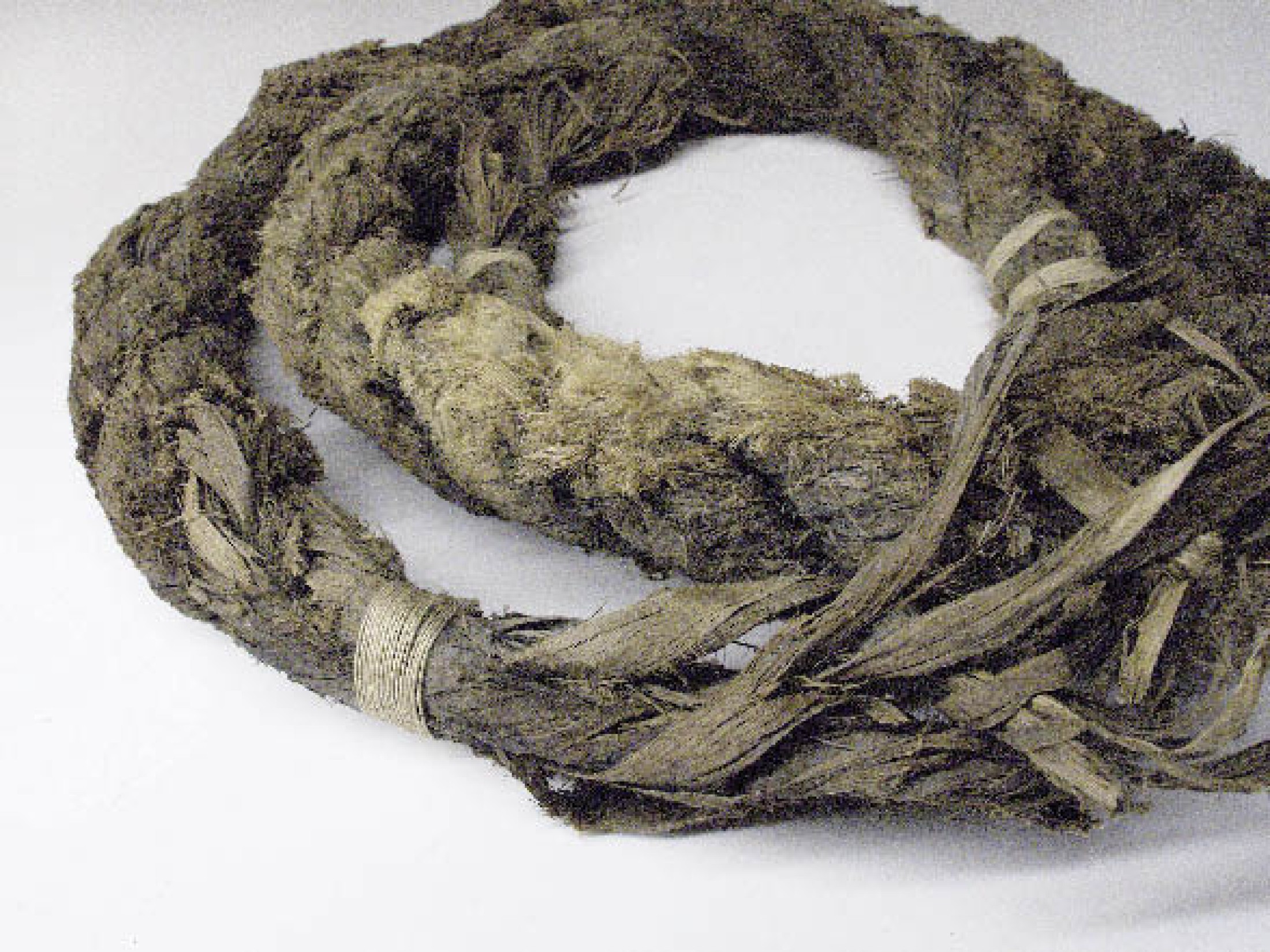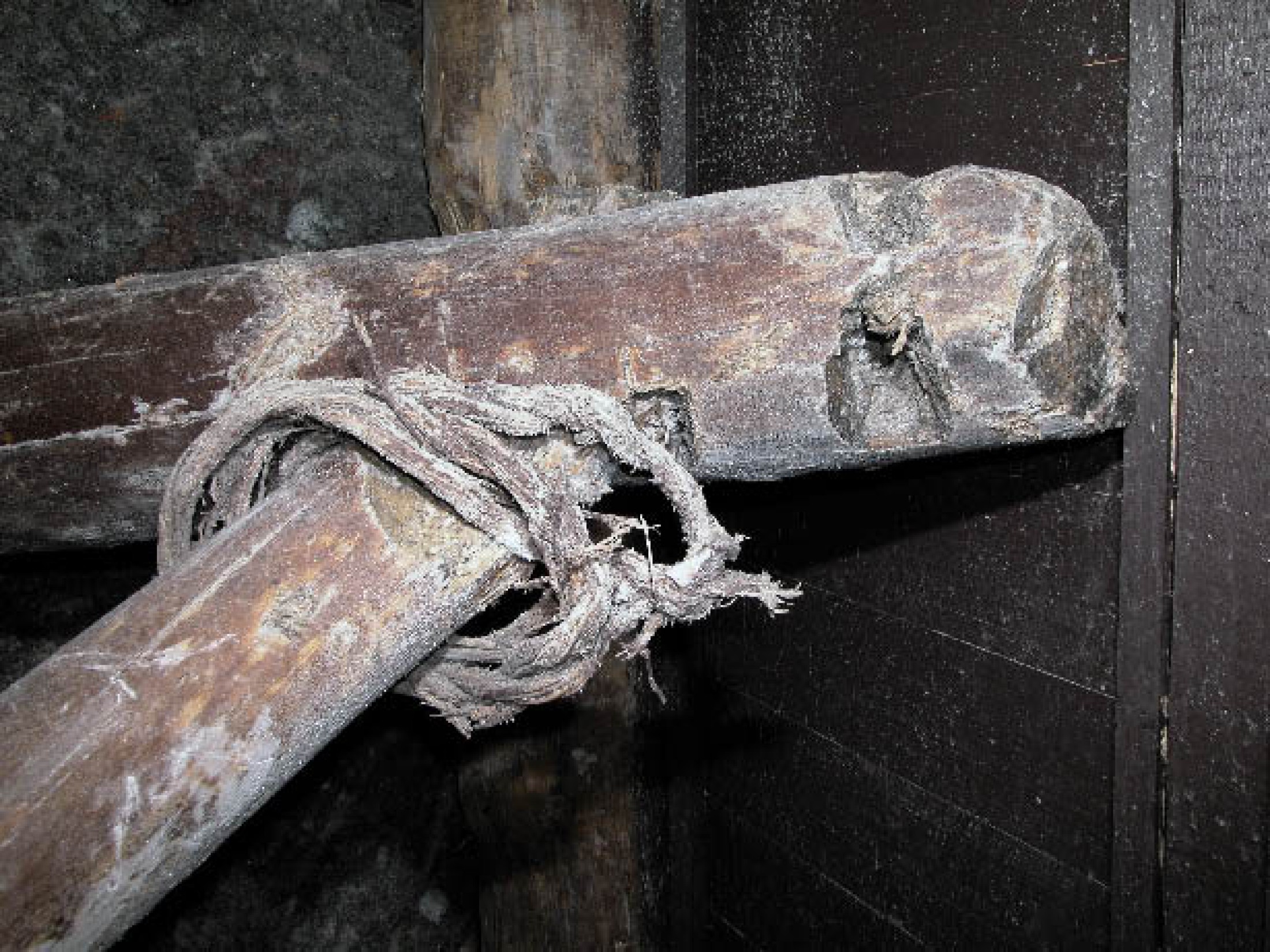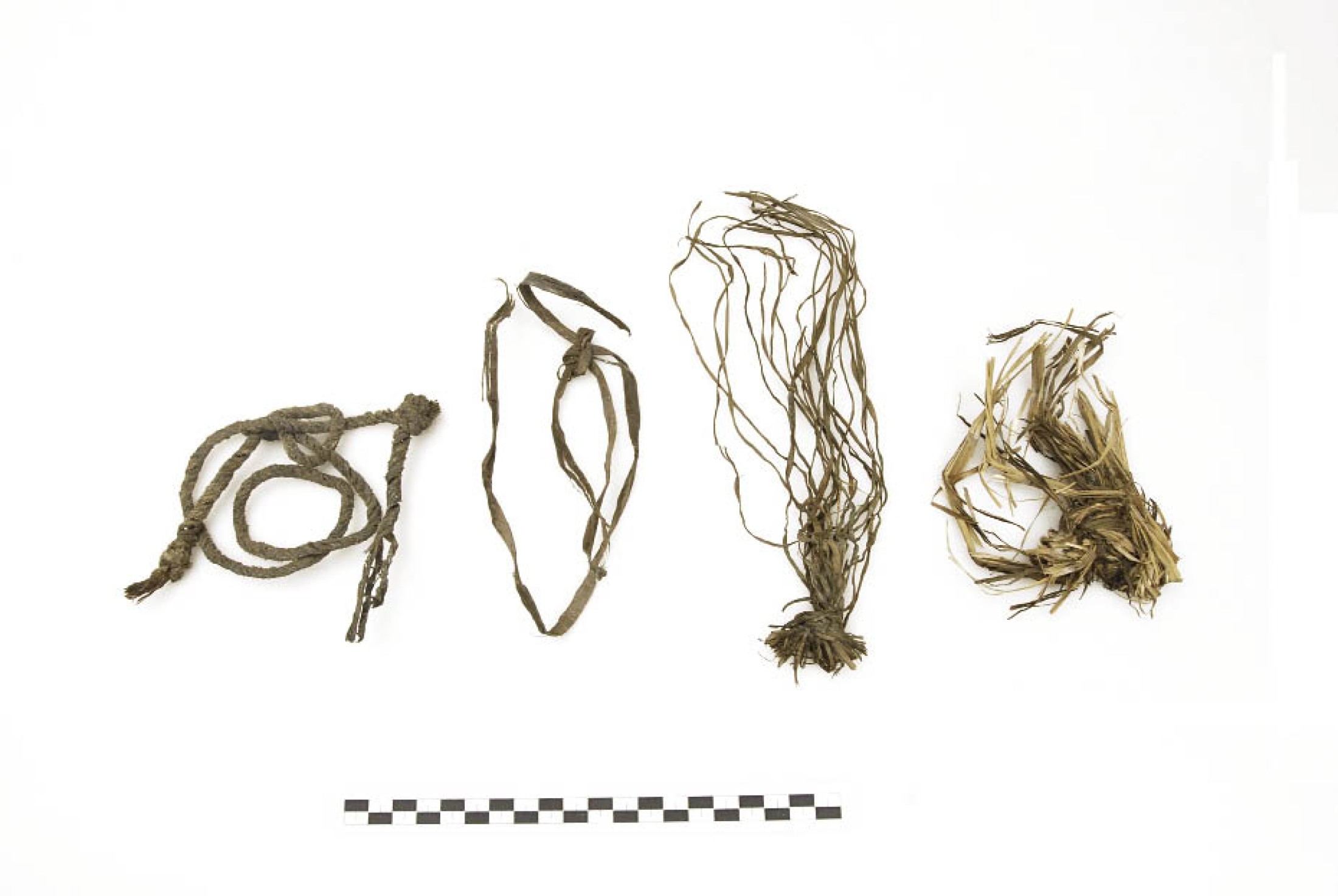Ropes, etc. – binding and transport material in the mine
Bast fiber, grass, straw, young tree branches, clematis, fur and leather were all used to tie together and transport material underground. A rope made from limewood bast had been preserved in the Christian von Tuschwerk mine. Even today, researchers are not sure of its exact length. Experiments show that it could have held weights of over one tonne.Binding and transport material in the mine
The limewood bast rope found in the Christian von Tuschwerk mine
Function of the rope from the Christian von Tuschwerk mine
Binding and transport material in the mine
Mining cannot work without binding and hauling devices. The Bronze Age miners did not have manila, sisal or synthetic fibres at their disposal, but they did have a number of other materials such as bast fibres, grass, straw, young branches, vines such as Old Man's Beard (clematis), fur and leather. Remains of these have been preserved in the Bronze Age mining waste. Young twigs and branches were also used. Fur and leather straps were rarely used. The break strength of bast fibre ropes is so high that bast was still being extensively used up to a hundred years ago. Strings and ropes of bast were made by twisting in a manner very much like that of hemp ropes (except that the individual fibres themselves were not spun, so it is a filament-, not staple- yarn technique).The limewood bast rope found in the Christian von Tuschwerk mine
The arm-thick bast rope discovered in the Christian von Tuschwerk is among the most impressive evidence of Bronze Age rope making. The rope weighs about 1.5 kg per linear metre; it has a diameter of 4 cm and a calculated break strength of more than one tonne. It seems probable that the rope was run through a pulley or black-and-tackle set up in order to neutralize its weight in use. Bast was the most important tie material used in the Bronze Age mine. Bast fibres form the layer between the wood and the outer bark. There are only a few trees whose bast fibres can be used as material for ties, among them lime trees and elms. In springtime, it is quite easy to harvest elm bast, whereas lime bast must be soaked over a longer period before it can be stripped off.Function of the rope from the Christian von Tuschwerk mine
Experiments carried out by researchers have revealed that the limewood bast rope found in the Christian von Tuschwerk mine could have held weights of over one tonne. Its high break strength suggests that the rope was used to bring in the timber for pit props. The loads must have been considerable, because excavations have repeatedly yielded trunks several metres long with diameters up to 30 cm. Moreover, it was green (undried) wood that was taken into the mine to be worked at the place it was needed. Green wood is much heavier than dry seasoned timber (which is virtually impossible to work with bronze axes). The large number of young, withies discovered in the mine are related to the transport of pit props. They were fixed as traction loops to heavy timbers to aid moving them. Such young growth has an extremely high break strength, and was used up to historic times, for instance in rafting logs down river.(Reschreiter, H. – Kowarik, K. – Loew, C.)




